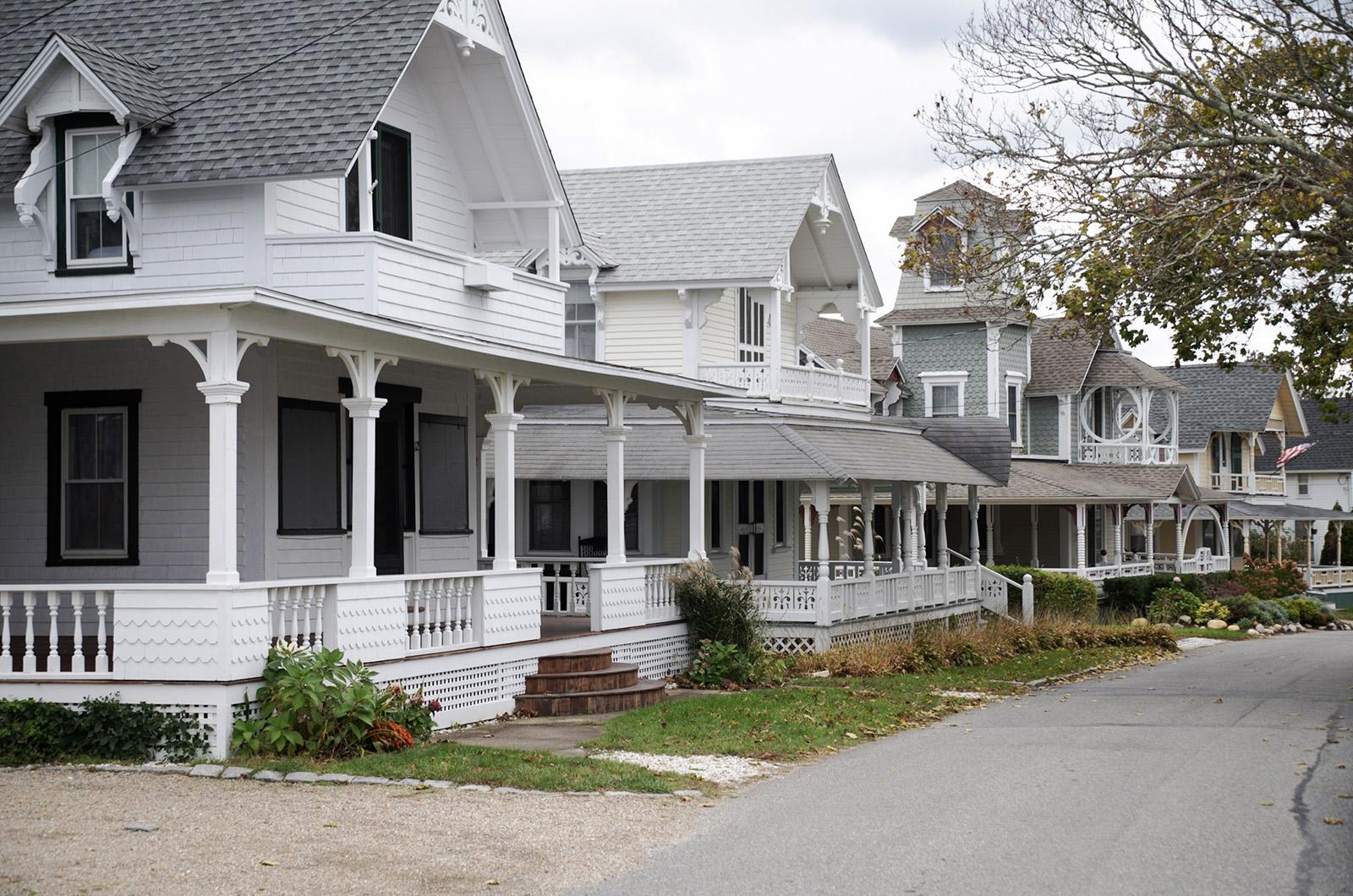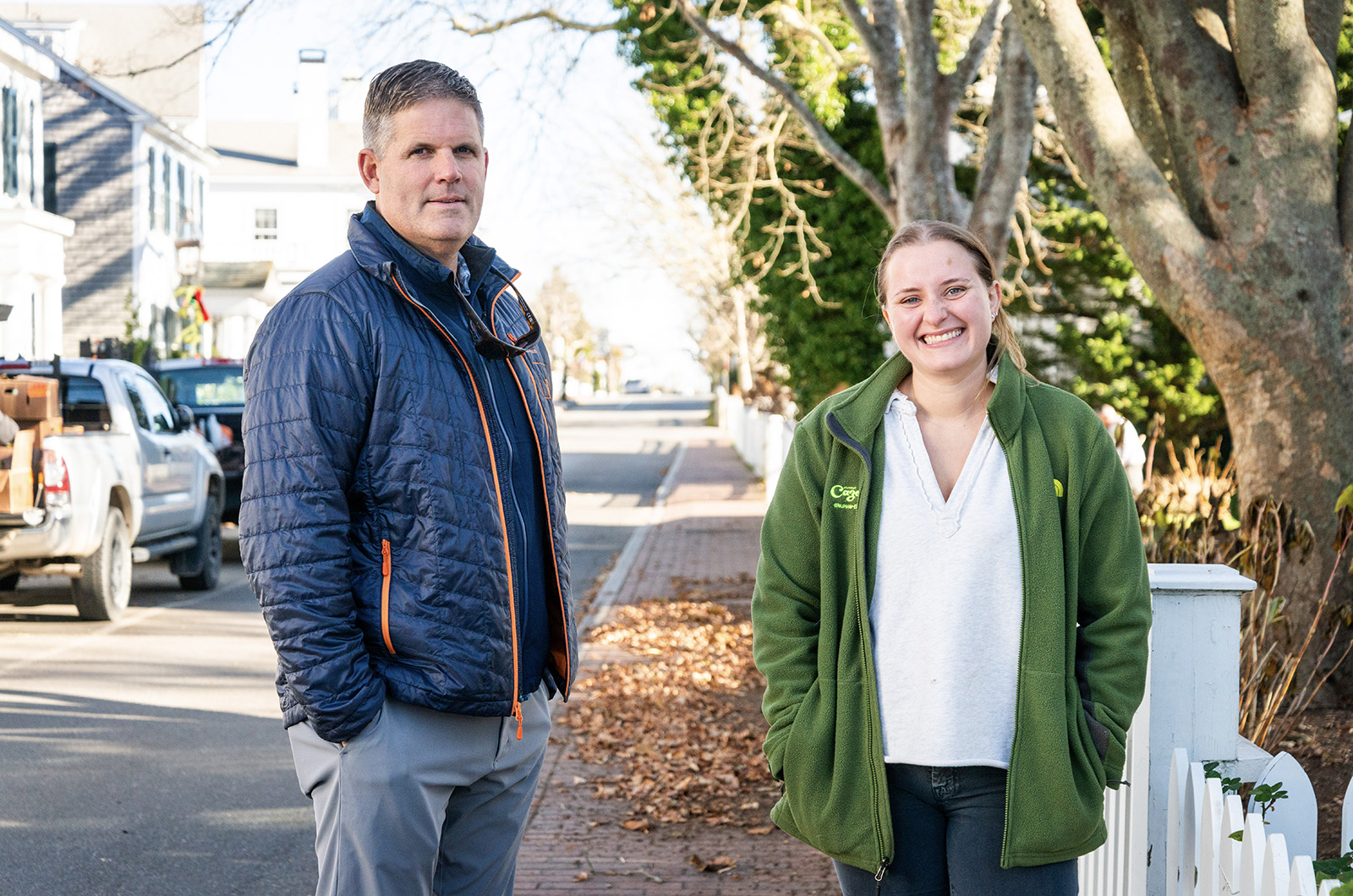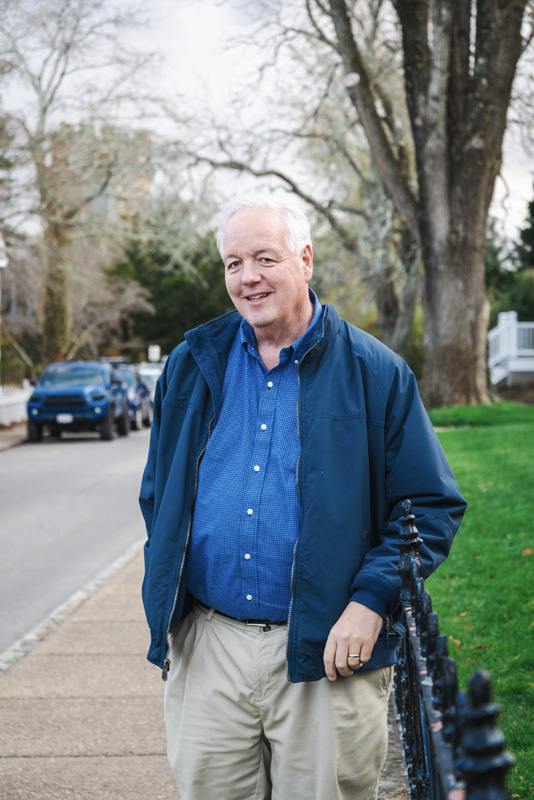Depending on one’s perspective, the Island’s historic district commissions are the last stalwarts fighting to preserve the Vineyard’s eroding character or another bureaucratic hurdle for frustrated homeowners.
By their own definitions, commission members say they are somewhere in the middle: a group of dedicated volunteers worn out by lengthy meetings and at times precarious détentes among architects, builders and property owners.
“We try to work with the applicant in terms of coming up with win-win solutions,” Cottage City Historic District commissioner Shelley Christiansen said. “For that reason, our meetings tend to go long. Sometimes our meetings go on for three hours or more.”
The towns of Tisbury, West Tisbury, Oak Bluffs and Edgartown each have their own designated historic districts with their own size and scope. All are maintained by volunteer-run boards facing unique yet overlapping challenges, from enforcement to staffing issues.
All, they say, are united by a desire to preserve the Island’s architectural history.
“The historic district is really important to the economic health of the town,” business owner and Edgartown historic district chair Julia Tarka said. “It’s important to preserve it.”
Now retired, Bricque Garber served as administrator for the Edgartown historic district commission for more than a decade, the one paid employee alongside an entirely volunteer-run board. Over the course of her municipal career, she said she saw hundreds of applications.
Unlike more informal historical societies or even official national or regional historic registries, local historic districts are governing bodies with “teeth,” Ms. Garber explained. Governed by both the state and the federal Department of the Interior, local historic districts are the gatekeepers to any construction or modification visible from the public way, whether it be street, sidewalk or harbor.
“That’s the key to everything,” Ms. Garber said. “We cover everything that is visible from the public way.”
By everything, she means everything. Windows, shingles, solar panels, paint colors and other exterior architectural features have all been subjects of contentious debate in historic district hearings.
Fences, Ms. Garber pointed out, are a particular sticking point. Under local bylaws, fences are effectively invisible, leaving everything behind them — whether it be a garage or a swimming pool — subject to commission review.
Interiors, however, are entirely up to the property owner.
“We’ve had plenty of applicants leave the exterior the same while tearing up the walls inside and opening the whole thing up,” Ms. Garber said. “There’s nothing we can do about that.”
When a house is part of a historic district, no matter when it was built, a homeowner must receive a “certificate of appropriateness” from the historic district commission before seeking any building permits. No homeowner in the district can opt out, and district guidelines and bylaws apply to all buildings within the district regardless of when they were built.
Bylaws are different from guidelines. A historic district’s bylaws trickle down from the state and take an act from the state legislature to change them. Guidelines, meanwhile, can be customized by the municipality as long as they pass at town meeting.
For that reason, Ms. Garber said, both the bylaws and guidelines are intentionally broad and open to interpretation, as they are meant to cover everything from a Greek revival whaling captain’s home to a Victorian cottage.
For nearly 10 years, Ms. Christiansen has served on the Cottage City historic district commission in Oak Bluffs, where local architecture runs a wide gamut. By necessity, bylaws and guidelines are applied on a case-by-case basis.
“It’s not written that way as policy per se, but in terms of a commissioner’s personal vote and decision-making... we’re not holding a 1980’s, 1990’s Cape home to the same standard as a Camp Ground-style gingerbread cottage,” Ms. Christiansen said.
As houses and their uses change, attitudes around what is permissible in a historic district shift as well. Ten years ago, solar panels and artificial building materials were two of the most controversial issues facing commissioners, Ms. Garber said. Today, commissioners in the down-Island towns say they have largely made peace with both developments.
More recently, however, energy-saving additions such as minisplits have become more common, sometimes being installed in highly-visible parts of a building. The problem comes when contractors don’t realize they need to go to the commission before installation, Ms. Christiansen said.
“It’s not necessarily always the homeowner who’s behaving badly,” she said. “Sometimes the HVAC contractors are skipping that step.”
“Whether it’s knowingly or unknowingly, I’m really not clear on that,” she added.
The popularity of swimming pools is also a sore spot for many commission members, Ms. Christiansen said, and their placement is handled differently from town to town. The Cottage City historic district does not have jurisdiction over anything below grade level, meaning there are no restrictions on pools.
In Edgartown, however, Ms. Tarka said swimming pools and similar amenities fall very squarely under commission review since they are visible from the public way. At just 30 years old, Ms. Tarka is one of the youngest historic district commissioners by several decades, having served on the commission since 2016. In her time, she said the commission has seen two lawsuits, although none have gone to trial.
“Our board has changed as development has changed,” she said. “We see everything.... It feels like there are more full renovations...contentious projects feel more contentious.”
Earlier this year, Ms. Tarka oversaw a controversial home renovation on South Water street that some residents claimed would block one of the last public views of Edgartown harbor. In the end, the application underwent major modifications over several lengthy hearings before receiving approval.
The debate it sparked, however, highlighted another limitation of the historic district commission’s oversight. Namely, several residents and neighbors objected to the historic house’s use as a high-end short-term rental. As a former real estate agent, Ms. Christiansen said the explosion of short-term rentals has prompted an uptick in high-end amenities like swimming pools and brought the question of use to the forefront of commission hearings — even when they have no bearing on the commission’s official review.
“Almost all of our liveliest meetings, in terms of turnout and protest, very often it’s around the subject of use,” Ms. Christiansen said. “We have to remind people we’re not the use committee. We’re just the appearance committee.”
Understanding the historic districts is one thing, but finding volunteers willing and able to steward them can be its own challenge.
In Tisbury, the death of longtime historic district commission chairman Harold Chapdelaine has left a significant gap on the already-overstretched municipal board. The commission currently has just four commissioners on its seven-member board and, unlike Edgartown, Tisbury has no paid administrator.
“We’re always on the verge,” commissioner Bow Van Riper said. “If somebody has to be off-Island for a medical appointment, if somebody asked to recuse themselves, if somebody has some issue at home and they can’t make it to a meeting, we’re always on the verge of not having a quorum and not being able to officially act as a board.”
A historian by profession, Mr. Van Riper joined the William street historic district commission just over a year ago after a friend encouraged him to apply. Finding volunteers for the board has been particularly difficult in recent years, he said, as the makeup of the district has shifted.
“The demographics of William street are changing,” he said. “It’s much more of a seasonal neighborhoo
d than it used to be... and it’s more complicated for [seasonal residents] to attend meetings.”
“And although members of the commission aren’t required to be residents or property owners in the district, understandably the people with the greatest interest in it tend to be people who have a personal connection to the district,” he added.
What’s more, he said, is the town’s bylaws specify that each commissioner must be a member of a local historical society, the local board of realtors or a nominee proposed by a local chapter of the American Institute of Architects. For years, Mr. Van Riper said, those rules have been interpreted to mean the commission should include a realtor, an architect and, more recently, a builder with a practical knowledge of construction.
“The combination of seven seats and several of them having specific professional expertise attached to them has made it, for some years now, a complicated thing to fill the seats,” Mr. Van Riper said.
This has also made it harder to evaluate more complex applications, he added.
“None of us has expertise in architecture or construction, and it limits our ability...to do the best possible analysis,” he said.
Edgartown has not had as much trouble with staffing, Ms. Tarka said, although they are currently seeking one new member for its six-person board plus alternates.
The Cottage City historic district commission is made up of five people plus alternates, a number that appears to be working and is currently being eyed by the town of Tisbury to make it easier to make quorum. Mr. Van Riper said he is expecting a proposal along those lines to go to town meeting this spring.
“We’re hoping to make it possible to have to have a full complement of people on the board more easily,” he said. “And to find a way to even soar going forward.”
This is the second article in a series on the Vineyard's historic homes. To read the rest of a series visit the State of Historic Preservation page.










Comments (1)
Comments
Comment policy »